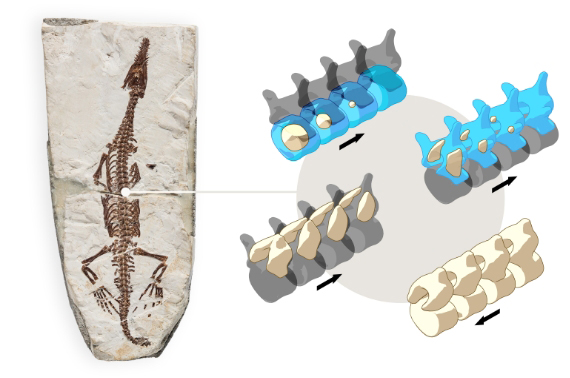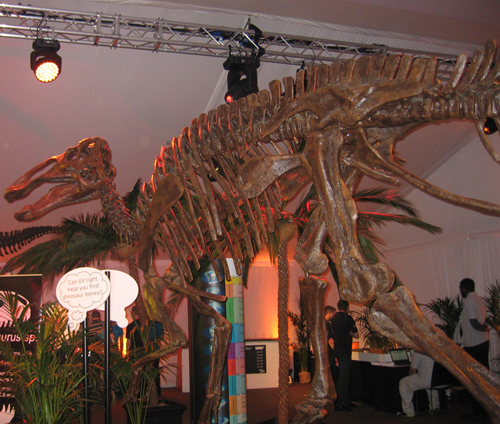The evolutionary development of the vertebral column has been extensively researched. Numerous fossil specimens have been studied as scientists pursue a greater understanding of the evolution of the backbone. Recently, a new scientific paper has been published in “Scientific Reports” that outlines the evolutionary development of ossification patterns in four-legged vertebrates.
Research from the Museum für Naturkunde
The study was undertaken by scientists from the Museum für Naturkunde (Berlin, Germany). Antoine Verrière and his colleagues were able to reconstruct the patterns of how the bones in the vertebral column formed in the ancestor to all land vertebrates based on a large dataset compiled from studies of extant and extinct vertebrates. The dataset also included new information on the spine of Mesosaurus tenuidens, widely regarded as the first reptile to adapt to an aquatic existence, back in the Permian some 300 million years ago.

The Evolution of the Backbone
Lead author of the paper, Antoine Verrière explained that M. tenuidens had a long snout and a powerful tail that propelled it through the water. It inhabited an inland sea that once existed in the southern region of the supercontinent Pangaea.
The palaeontologist added:
“On some rare juvenile specimens, we observed that the neural arches, the spines sitting on top of the main part of a vertebra, were closing from head to tail as the animals grew, much like a zipper. We wanted to understand how this pattern would fit in the evolutionary history of land vertebrates, but quickly realised there was surprisingly little information available. So, we decided to investigate this ourselves!”
Four Major Developmental Patterns in Backbones of Amniotes
The research team looked at four of the major developmental patterns in the backbones of amniotes (mammals, reptiles and birds):
- The ossification of the centrum (the main body of a vertebra).
- The ossification of paired neural arches.
- The fusion of the initially forming paired neural arch elements into one spine.
- The fusion of neural arches with the centrum, also called neurocentral fusion.
Statistical analysis was used to model how these different patterns changed from the Permian through to today, their work roughly covering the evolutionary history of land-living vertebrates excluding amphibians. With this research the team could reconstruct the patterns in the common ancestor to all land vertebrates.
Co-author of the study, Professor Jörg Fröbisch (Museum für Naturkunde) commented:
“What surprised us the most was that these patterns appear to have been relatively stable for the last 300 million years. Modern and extinct vertebrates are enormously diverse in terms of their body shapes and lifestyles and the elements of their vertebral columns are organised in complex units that differ greatly between species. Nevertheless, the ossification patterns were much more conservative than was expected from the great morphological diversity.”

Picture credit: Everything Dinosaur
Some Deviations Identified
Although the patterns studied show relative stability through deep geological time, some deviations were identified. Notably, birds, mammals, and members of the Squamata Order (snakes and lizards) each evolved their own specific modes of vertebral ossification, which differ from the ancestral condition in amniotes. Yet again, within these groups, the patterns were also surprisingly stable.
Fellow co-author Professor Nadia Fröbisch (Museum für Naturkunde) explained:
“Ostriches and seagulls, for instance, have very different anatomies and lifestyles, but their vertebral columns ossify in similar ways. This shows that some changes can be observed between the major lineages of land vertebrates, but within each of the main lineages, spine development remained rather stable again.”
This study demonstrates how studying modern animals alongside their ancient ancestors can provide a much deeper understanding of the evolutionary development of key anatomical structures.
Everything Dinosaur acknowledges the assistance of a media release from the Museum für Naturkunde (Berlin) in the compilation of this article.
The scientific paper: “Regionalization, constraints, and the ancestral ossification patterns in the vertebral column of amniotes” by Antoine Verrière, Nadia B. Fröbisch and Jörg Fröbisch published in Scientific Reports.






Leave A Comment